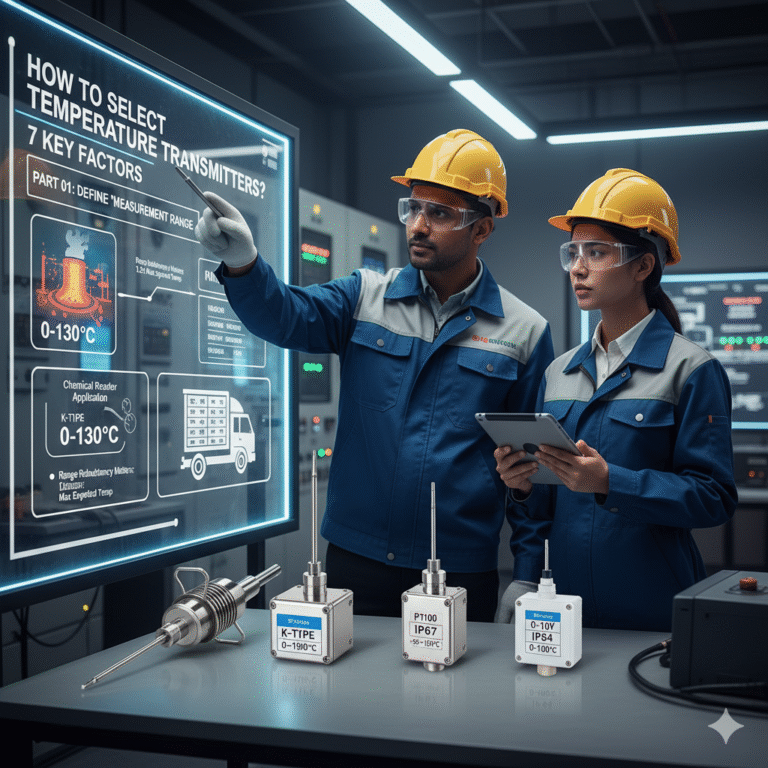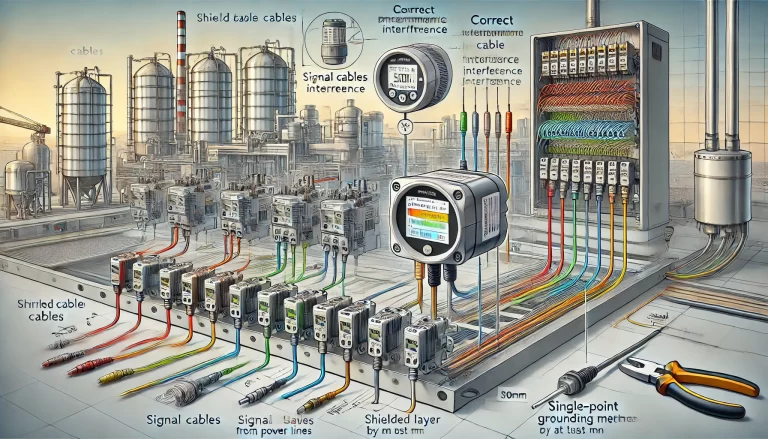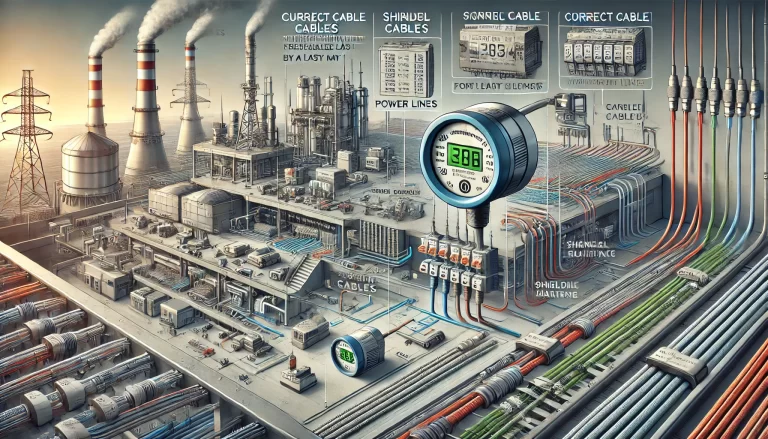In industrial production, temperature transmitters act as the “eyes” that monitor temperature. Whether it’s measuring temperatures in food cold chains, high-temperature monitoring in chemical reactors, or precise temperature control in electronics workshops, they are indispensable. However, many engineers make mistakes when selecting these devices: either choosing a transmitter with too small a range, causing it to burn out under high temperatures, or selecting an inadequate protection rating, leading to frequent failures in humid environments. Sometimes, selecting unnecessarily high precision leads to wasted money.
In fact, selecting the right temperature transmitter doesn’t have to be based on intuition. The key is to focus on the “working conditions” and check them against 7 core factors. Let’s go through these factors, using examples from industries such as food, chemicals, and electronics, to clarify the selection process and help you choose the right device, not just the expensive one.

PART 01: First, Define the “Measurement Range”
Avoid “overestimating” or “wasting” the temperature range.
The first step in selecting a temperature transmitter isn’t about the brand or precision; it’s about understanding the actual temperature range of the medium being measured. This is fundamental to avoiding transmitter damage or wasted accuracy.
Consider Both Regular and Extreme Temperatures:
For example, in food pasteurization, the regular temperature is between 60–95°C, but during startup, it might reach 110°C. So, the transmitter should be able to handle 110°C, not just the regular range. If you choose a 0–100°C transmitter, it could be damaged when the temperature exceeds the range.
Account for Special Mediums:
For liquid nitrogen storage (-196°C), choose a transmitter with a range below -200°C. For high-temperature steel smelting furnaces (above 1200°C), you’ll need a transmitter capable of handling temperatures up to 1500°C, as standard transmitters won’t survive such conditions.
Range Redundancy Matters:
For regular conditions, choose a range that is 1.2 times the highest expected temperature. For instance, if the maximum expected temperature is 100°C, select a transmitter with a range of 0–120°C. This avoids overloading the transmitter and ensures accuracy without having too broad a range that could reduce precision (e.g., a 0–500°C transmitter will struggle to measure a 10°C difference accurately).
PART 02: Choose the Right “Output Signal”
Ensure compatibility with your control system.
If you choose the wrong output signal, even if the transmitter measures the temperature accurately, the signal may not be able to be transmitted to the control system, rendering it useless. There are two main types of systems to consider:
Analog Signals: Suitable for traditional or simple setups.
4-20mA: The most commonly used signal in industrial settings, providing long transmission distances (hundreds of meters) and strong anti-interference ability, ideal for retrofitting old factory systems or outdoor installations like temperature measurement on chemical pipelines.
0-10V/0-5V: Offers slightly higher accuracy than the current signal but has a shorter transmission range (usually up to 10 meters). It’s perfect for internal control systems, such as temperature monitoring in electronic workshops.
Digital Signals: Suitable for smart or complex setups.
HART Protocol: Transmits both 4-20mA analog and digital signals. For example, when measuring reactor temperature, it can not only transmit real-time temperature but also display the transmitter’s fault status and calibration time for easy maintenance.
Modbus RTU Protocol: A pure digital signal, ideal for connecting multiple transmitters in a network. For example, in food cold storage, multiple temperature points can be monitored by connecting transmitters via Modbus, allowing centralized monitoring without the need for individual wiring.

PART 03: Choose the Right Sensor Type
Select based on the “temperature range” and “response speed.”
The core of a temperature transmitter is its sensor. Common sensors like thermocouples and RTDs (resistance temperature detectors) are suited to different scenarios. Choosing the wrong sensor leads to either inaccurate readings or a shortened lifespan.
Thermocouples: Best for high temperatures and fast temperature changes.
Operating on the principle of two dissimilar metals generating a voltage due to temperature differences, thermocouples are fast-responding (usually under 0.5 seconds) and have a wide temperature range (-200°C to 1800°C). They are ideal for applications like metal heat treatment or boiler flue temperature measurement. Common types include J-type (0–750°C) and K-type (-200–1300°C).
Note: The output signal is nonlinear, so your control system needs to perform linearization to avoid measurement errors.
RTDs: Best for medium-to-low temperatures and high accuracy.
RTDs work by measuring the change in electrical resistance of metals with temperature. They offer high linearity (temperature and resistance are almost directly proportional), making them ideal for accurate measurements, typically between -200°C to 850°C. RTDs are perfect for food storage or electronic workshops that require stable and precise temperature control.
Common types include Pt100 (high precision) and Cu50 (cost-effective for 0–150°C applications).
PART 04: Protection Rating
Choose based on the “environmental harshness.”
The protection rating determines how resistant the transmitter is to damage in various environmental conditions—whether it’s humidity, corrosion, or dust.
Harsh Environments: At least IP65 is required.
For outdoor or exposed installations (e.g., oil tank temperature measurement at a fuel station), choose IP65, which can withstand heavy rain and dust.
For chemical plants, mines, or humid environments, choose IP67 to prevent damage from immersion in water or exposure to corrosive gases.
For underwater temperature measurements (e.g., aquaculture), choose IP68, as it can withstand prolonged submersion in water.
Normal Environments: IP54 suffices.
For clean indoor settings, such as control rooms or food processing, IP54 is sufficient, offering protection from limited water splashes and dust, offering good cost performance.

PART 05: Installation Method
Avoid “installation issues” and “unstable mounting.”
The installation method is critical; incorrect selection can cause mounting problems or transmitters to loosen after a few days, affecting temperature measurements. The key is to look at the “installation location” and “available space.”
Pipeline Temperature Measurement: Use threaded or compression fittings for easy installation, especially for regular pipelines like steam pipelines.
Tank Temperature Measurement: Use flange or surface mounting for larger tanks to prevent looseness or instability.
PART 06: Brand and Cost Considerations
Balance “quality” with “budget.”
Choosing a brand isn’t about picking the most expensive option, but rather choosing the best within your budget. You should prioritize trusted brands that offer reliable after-sales service, especially in critical industries like chemicals or pharmaceuticals.
High-Precision Applications: Choose established brands like Emerson, Siemens, or Rosemount, which provide reliable service and technical support.
Budget-Conscious Applications: For general heating applications, consider newer brands that offer a good balance of cost and reliability.

PART 07: Summary
Don’t be afraid of selecting temperature transmitters. The key is to create a “requirements checklist”:
The temperature range of the medium (both regular and extreme).
The type of signal your control system supports (4-20mA, HART, etc.).
The required precision for your application (±0.1°C vs. ±1°C).
The environment and installation space (pipe, tank, IP65/IP54).
Your budget range.
By checking off these factors, you’ll avoid common mistakes like selecting the wrong range, protection, or precision. The goal is to choose a transmitter that matches your needs rather than simply opting for the most expensive one. After all, selecting the right instrument ensures more stable temperature control and reduces future maintenance hassles.
